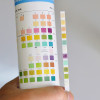
 IJCP Editorial Team
IJCP Editorial Team
A management model for admission and treatment of pediatric trauma cases
The purpose of a study published in the Israel Journal of Health Policy Research was to develop a management model for admission and treatment of pediatric trauma utilizing the Theory of Constraints (TOC).
This study was based on interviews with 17 highly experienced policy makers, senior nursing managers and medical managers in pediatrics and trauma.
A current reality tree (CRT) was illustrated according to four identified undesirable effects (UDEs), which focused on the absence of:
- Specific definitions of case manager in pediatric trauma
- Uniform criteria for the appropriate site for admission for cases with pediatric trauma
- Standard guidelines and protocols for trauma management and for training of trauma medical teams
- Standard guidelines for the evacuation of pediatric trauma patients
The management model for pediatric trauma admissions and management is based on – human resources, hospital policy with regard to emergency department (ED) for pediatric trauma patients, and specified definitions regarding children and trauma levels.
Each of these components must be clearly defined in order to gain permission for admitting and treating pediatric trauma patients.
The optimal emergency department (ED) for pediatric trauma cases must sustain available operating rooms; intensive care beds; an imaging unit; laboratories; and equipment suitable for treating children. Furthermore, it should have aptly trained staff. Medical centers should be classified based on their trauma treatment capabilities and ability to treat an array of severities of pediatric trauma cases.
Source: Israel Journal of Health Policy Research. 2021; 10: 73. doi: 10.1186/s13584-021-00506-5

IJCP Editorial Team
Comprising seasoned professionals and experts from the medical field, the IJCP editorial team is dedicated to delivering timely and accurate content and thriving to provide attention-grabbing information for the readers. What sets them apart are their diverse expertise, spanning academia, research, and clinical practice, and their dedication to upholding the highest standards of quality and integrity. With a wealth of experience and a commitment to excellence, the IJCP editorial team strives to provide valuable perspectives, the latest trends, and in-depth analyses across various medical domains, all in a way that keeps you interested and engaged.












Please login to comment on this article